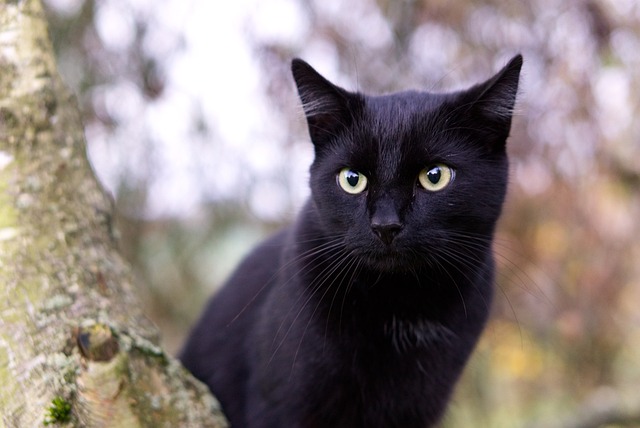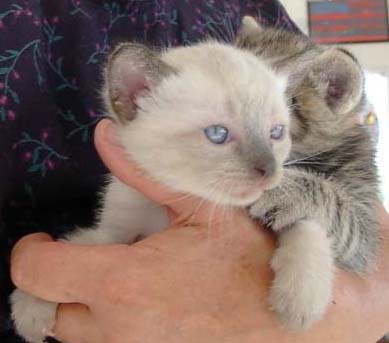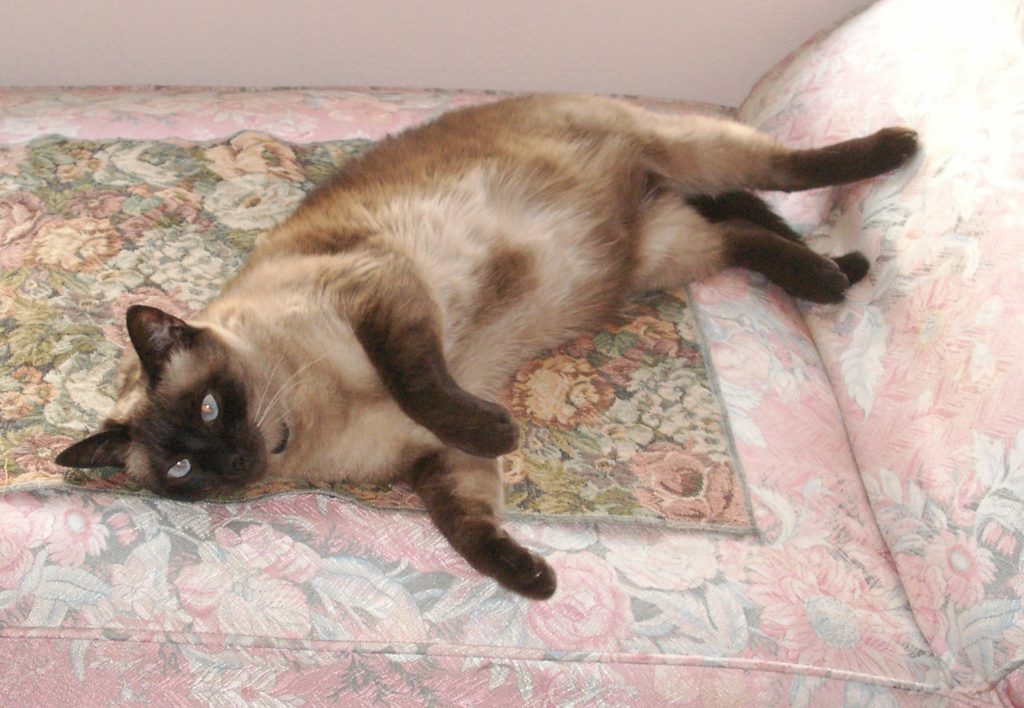Kitty Boot Camp: a true cat story

Kitty Boot Camp: a true cat story tells about some of the behaviors that we observed when we built a house near a colony of feral cats and their offspring. I’ll explain the behavior “kitty boot camp” later.
During the 1990s, we built a home on acreage in a rural subdivision in the California foothills. While working on the initial construction, our builder encountered an apparently vicious cat. She was hiding in the air conditioner ductwork. She bit and scratched the contractor when he tried to pull her out.
Busy as we were, working and commuting to our home and the construction site daily, we forgot our contractor’s cat story. But one day my son heard kittens mewing. A somewhat flattened large box, discarded and not yet hauled to the dumps, lay on the ground . It was in this box that my son found the kittens.
Since it was the rainy time of year, we wanted to rescue the kittens from the storms. Robert suggested the perfect place to shelter them. He lined a small cardboard box, placed the kittens in it and put it under the wraparound porch. The momma cat immediately joined her kittens there. We brought milk and tidbits for momma cat and peeked under the porch sometimes to view them. Momma cat kept her distance from us, at first. Eventually, though, she warmed up to following us around the property when we went on walks.

A Balance of Nature
At that time, where we lived, there was not an overabundance of cats. Coyotes, mountain lions and other predators roamed there. There were foxes. And there were mice and rodents. The subdivision wasn’t completely built out yet, many lots were empty. The lots themselves were large, up to 5 acres, and some had springs of fresh water. There was a kind of balance of nature. We hadn’t gotten acquainted with the cat as an individual pet, as we later would with her descendants. She was a part of the wild ecosystem that established itself before we moved there.
But I couldn’t resist playing with the kittens and feeding them. The kittens were so friendly and adorable. After a while, I was the “cat lady” of the area. Nearby neighbors often asked for a cat for their own place. Everyone needed a good mouser around their property. Some of our porch kittens, though, stayed, grew up near our house, and had kittens of their own.

Although it is hard for an urban dweller to imagine a place where there are not enough cats, cats were in demand in this area at that time. With so many predators thinning out their numbers and many rodents roaming around, cats were valued and useful.
Male Cat Bonding
Two of the cats stayed for years on our property. One cat was the daughter of the original black feral female and the other was a male black cat who apparently was the progenitor of many of the cats in the colony. The old male had a peaceful personality. We would encounter him sitting on a log, just so calmly. We never fed him, he was completely independent and lived off the land. In later years, his grown-up son, who had become somewhat of a pet for us, could be seen sometimes calmly sitting at the old male’s side. For us, this non-confrontational behavior between the elder and younger cat was unbelievable. We didn’t know about what we now call “cat culture”, because we had only ever known city cats, who are often stressed about territory.
Boot Camp for Kittens
A survival aspect of the cat behavior of our “tribe” of cats was what Robert referred to as “kitty boot camp”. The mother cat and her kittens lived in a cloth lined cardboard box on the porch. She nursed them, cleaned them and then went off into the brush for a while to hunt and bring back tidbits for them. When the kittens were about 6 weeks old or so, mother and kittens all disappeared. In about a week they came back.
A vivid memory from those years is of a day when the cat we named Rascal came up out of the brush followed by her nine proud kittens, single file, all with their short fat tails pointing straight up to the sky. The tiniest of them was the last in line. They marched up to the porch and climbed into their “nursery” box. They had successfully returned from a week of “boot camp”, where, we surmised, mother cat taught them to hunt and survive in nature.
The “boot camp” with the kittens was repeated with each litter and was common for all the mother cats and kittens that grew up on the porch.
Arranging the Catch to Entice the Kittens to Eat Solid Food
The first cat we became acquainted with, the feral female, revealed how displaying the catch was part of a cat culture ritual as well. As this was the group of kittens we rescued from the big refrigerator box who sheltered under the porch, we easily observed them. One day Robert went down to peek at the feral cat’s kittens and came rushing up to tell me “you have got to come down right now and see this, she has a kitten cafeteria there!”
I went to see and what I saw was three mice, a couple of lizards and a few large grasshoppers laid carefully in a row from largest to smallest as if an imaginary line marked the bottom of the display. The mother cat had so neatly arranged the catch to display to her kittens, that it looked like a human cafeteria display. The cat’s remarkable natural talents included food arrangement and we were very impressed!
They Moved with Us
When we sold our property we took the cats with us. By then, the tribe had become domestic, tame kitties, ready for city life, vaccinated and “fixed”. There were six of them who moved with us to the city and stayed with us for years. The last to leave us, at the age of 19, was the beautiful Siamese pictured here. She, also, was a descendant of the old, friendly feral black male.
